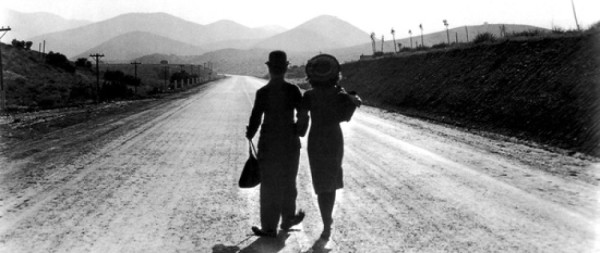Star Wars
Directed by George Lucas
Written by George Lucas
1977/USA
Lucasfilm/Twentieth Century Fox Film Corporation
Repeat viewing/Netflix rental
#642 of 1001 Movies You Must See Before You Die
[box] Ben Obi-Wan Kenobi: Use the Force, Luke.[/box]
This made for great family Thanksgiving Day viewing.
As the story opens, Princess Leah (Carrie Fisher) is a captive of the Empire on a giant space station known as the Death Star. She had been carrying secret plans stolen by Rebel Forces for use against the Empire and is only being kept alive in hopes that she can be forced to reveal their location. Her principal inquisitor is the evil right-hand man of the Emperor, Darth Vader (voice of James Earl Jones).
Princess Leah hides the plans, along with a holographic message to one Obi-Wan Kenobi begging for help, on the robot R2-D2. R2-D2 manages to escape the Death Star with his robot friend C-3PO. They land on a desert planet, where after many adventures, they manage to connect with the farmer boy Luke Skywalker (Mark Hamill), who happens also to be a skilled pilot. Through Luke and his uncle, they locate Obi-Wan Kenobi (Alec Guinness). Obi-Wan tells Luke that he is the descendent of the once proud tradition of Jedi Knights, as is Obi-Wan himself.
The group set out for Princess Leah’s home planet. First they must find a suitable spacecraft. They run up against mercenary hot-shot pilot Han Solo (Harrison Ford) and he and his first mate Chewbacca form the final members of the team. On the flight, Obi-Wan teaches Luke the religion and fighting skills of the Jedi Knights. Many other adventures ensue before the boys can rescue the Princess, ending in a mano-to-mano encounter between Obi-Wan and Darth Vader.
I am slightly too old for Star Wars to have formed a part of my formative years. To me it is nothing more than an entertaining adventure story with some before-their-time special effects. In thinking it over after this viewing, I think one of the things that may have made it such an icon was its position in film history. The seventies were the era of anti-heroes in films and Star Wars returned audiences to a world of bright lights, escapism, and the battle of good versus evil. It really was a ground breaker in that sense.
Star Wars won Academy Awards in the following categories: Best Art Direction-Set Decoration; Best Costume Design; Best Sound; Best Film Editing; Best Effects, Visual Effects; and Best Music, Original Score. It was nominated for: Best Picture; Best Supporting Actor (Guinness); Best Director; and Best Writing, Screenplay Written Directly for the Screen. Ben Burtt won a Special Achievement Award for sound effects (for the creation of the alien, creature, and robot voices).
Original Trailer













